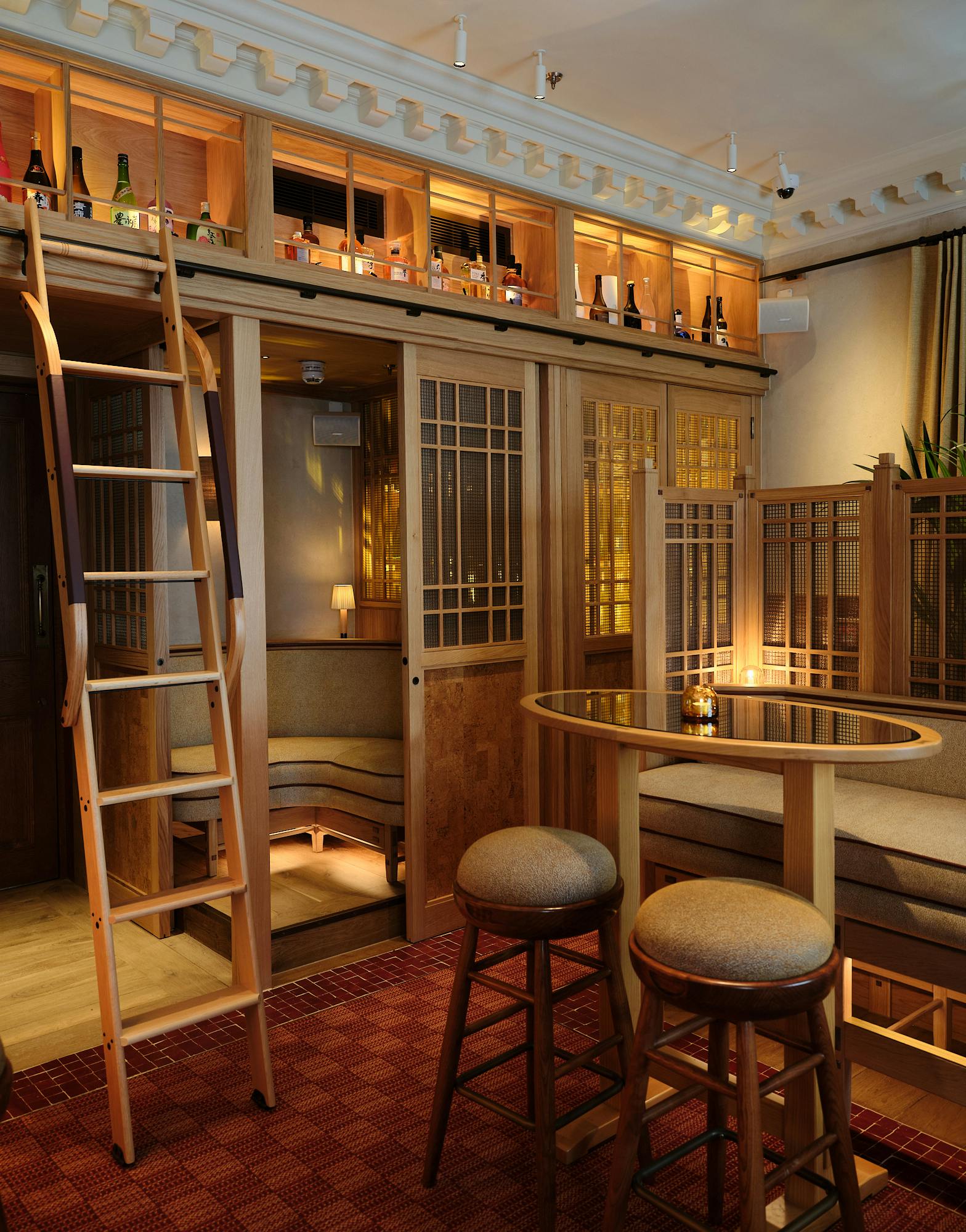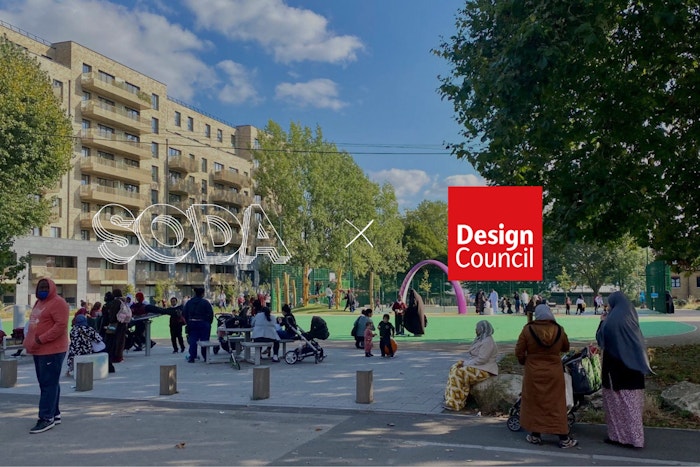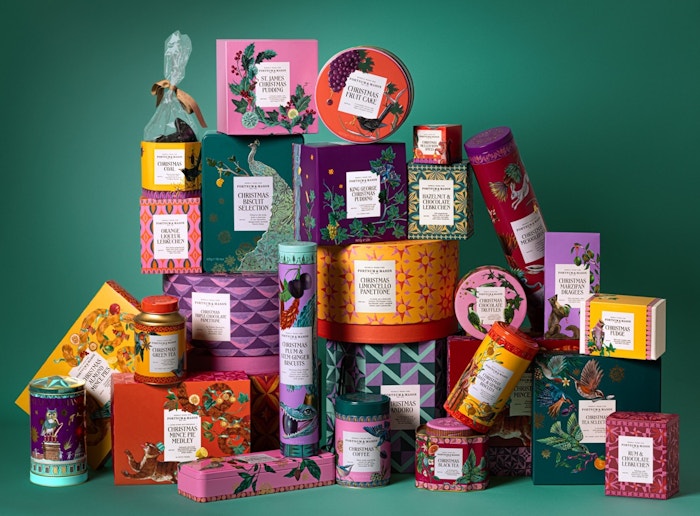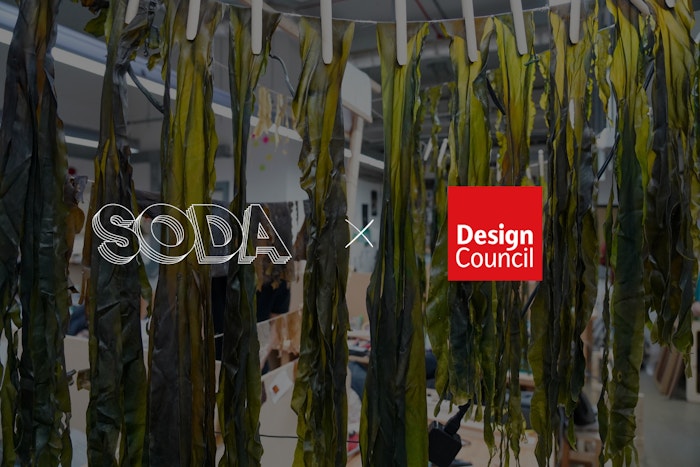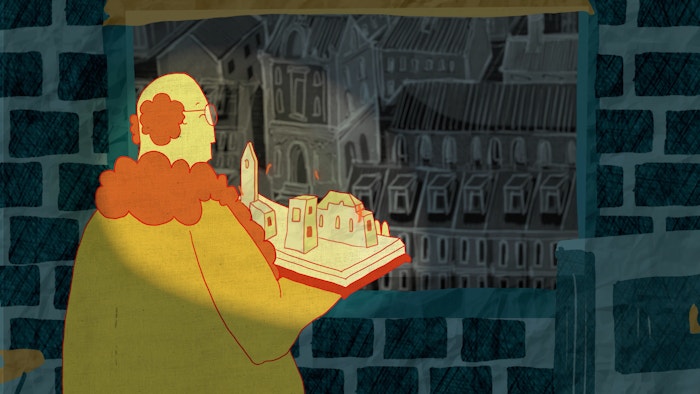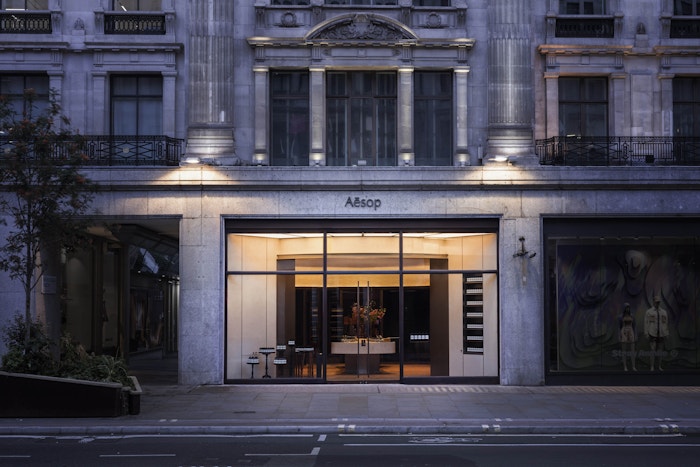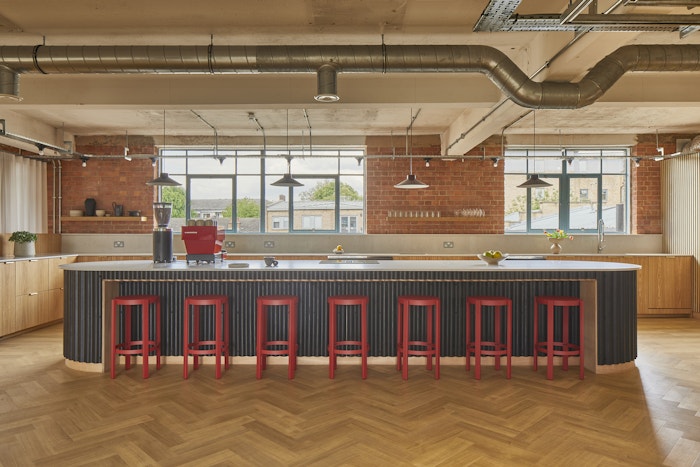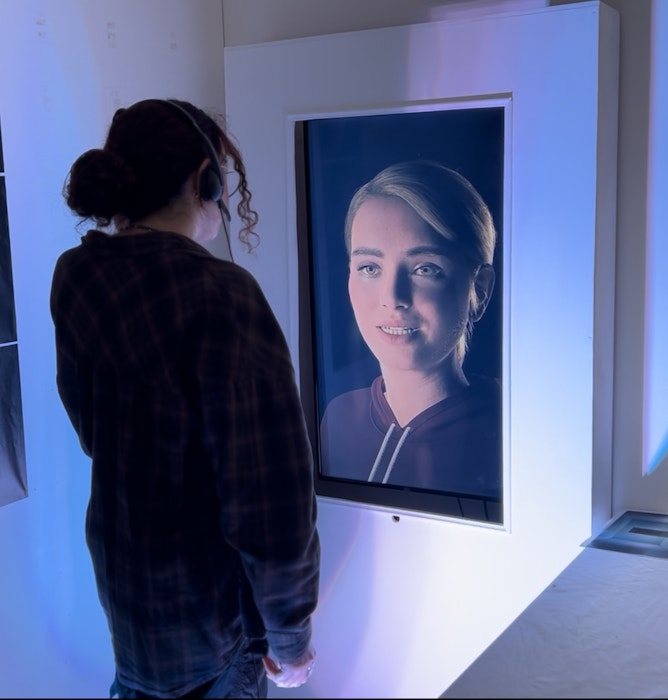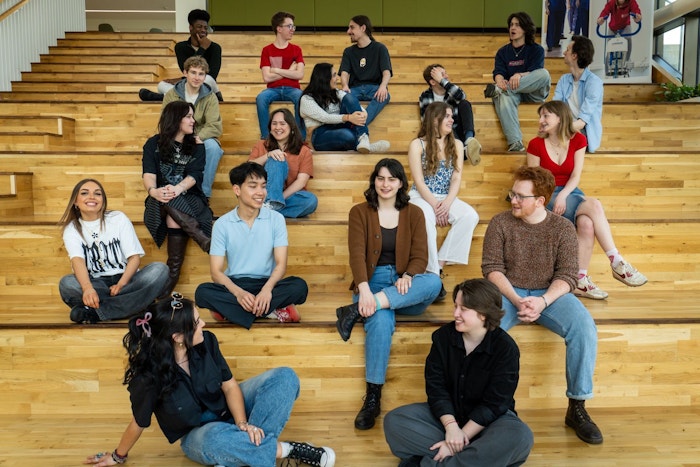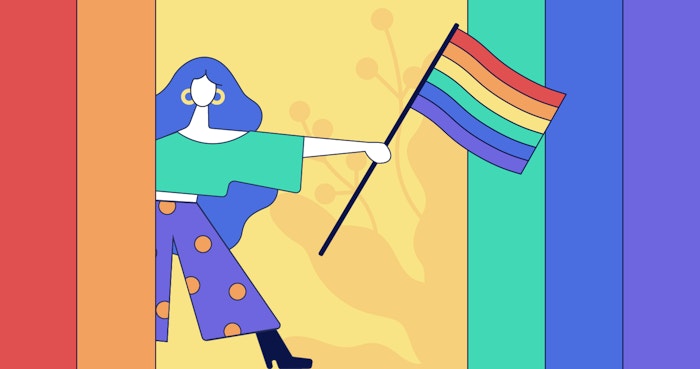
09 Nov 2017
Empty spaces to extraordinary experiences
Casson Mann is an award-winning museum, exhibition and interior design practice dedicated to delivering world-class innovative and engaging experiences. Some landmark projects include the First World War Galleries at the Imperial War Museum, the Hollywood Costume exhibition at the V&A, and a pioneering project with La Cité du Vin, the world’s largest museum dedicated to the story of wine. We talked to co-founder Dinah Casson about how they go about transforming empty spaces into extraordinary experiences.
How do you and your team approach the very detailed projects that you work on? Where do you start?
When we are working in museums, we design with story, object and space in mind. This triad of elements is integral to our narrative approach, each informing, shaping and inspiring the other. When we are designing offices or restaurants, the thinking is similar, but the balance of these elements will be different. Whatever the space, the people who visit it are always at the front of our minds. We are always in their shoes, anticipating their needs before they are aware of them themselves, allowing them to rest, to engage, to think and to navigate with ease and pleasure

La Cité du Vin wine museum in Bordeaux, France
Can you tell us more about your creative process?
We begin with the brief and, where there isn’t one or only half of one, we create one with the client. We can’t fully respond until we fully understand what a client wants. Teasing this out can take time, although it is always time well spent.
As we work across space, light, materials, storytelling, experience, audio and journeys, our process encompasses many design disciplines, from architecture and interior, graphic design, illustration and multi-media to furniture, product and lighting design. We work closely with these collaborators, mutually feeding off each other’s creativity, from the beginning through to the end. Our process begins therefore with the narrative brief, together with an understanding of the spatial opportunities, linked with the ambition.
'Whatever the space, the people who visit it are always at the front of our minds. We are always in their shoes, anticipating their needs before they are even aware of them themselves'
In exhibition design we work directly with the curators to interpret a design brief, responding with a concept and go on to creatively direct all aspects of the proposals. We often work with architects on new buildings as well as old. Recently these have included Foster & Partners, X-Tu (Paris) and Snøhetta. We also work closely with other disciplines in teams that increasingly we are able to put together ourselves. These might include writers, artists, sound designers, olfactory consultants, video artists, fine artists, as well as the more expected engineers, graphic designers and quantity surveyors. Big exhibition projects are often long, spanning three or more years and the creative process continues almost through to the opening.
To see our story concepts take shape within a space and hear positive feedback from visitors is deeply satisfying. But we do not stop at that point. We learn from each project, feeding the results into the collective knowledge in the office.
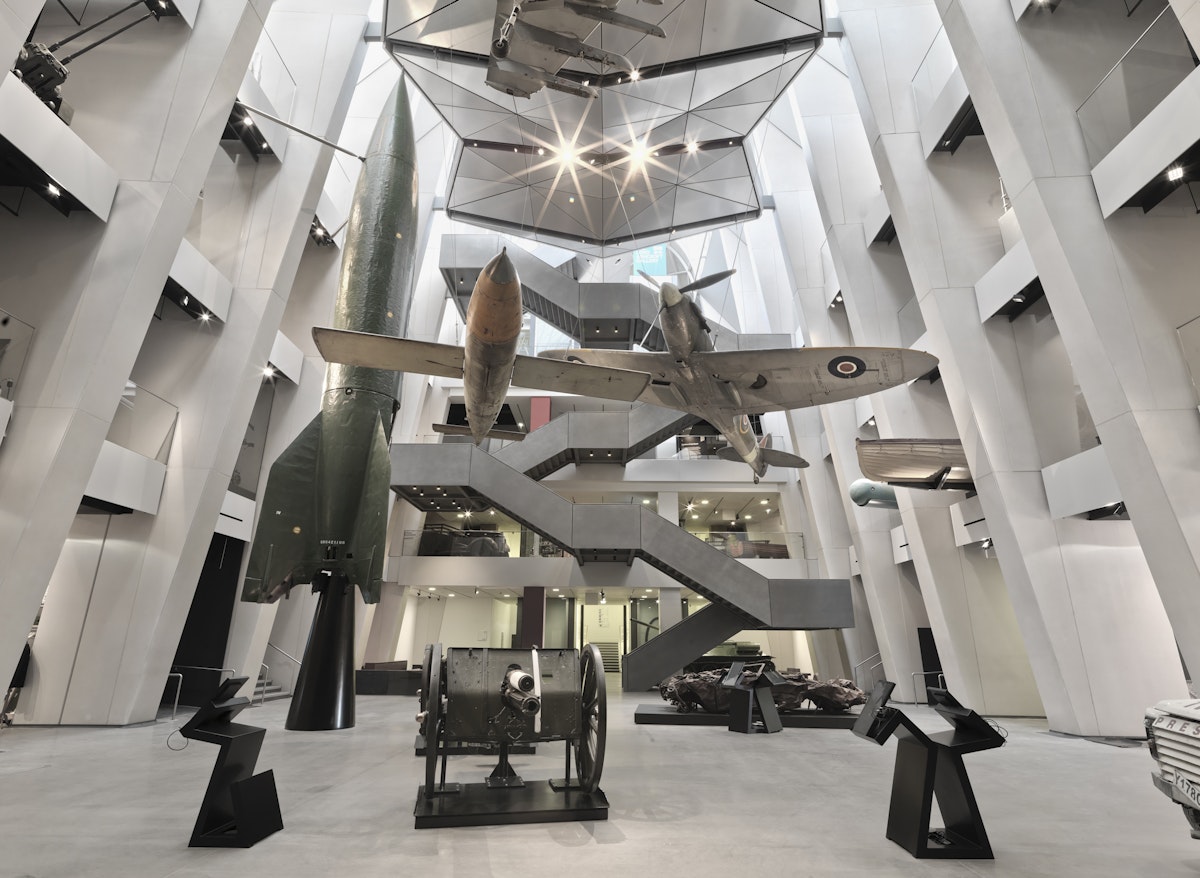
The Atrium galleries at the Imperial War Museum
What have you learnt about collaborating throughout all your different projects?
With collaborations the key is to foster a creative environment within which everyone can be stretched. For this to happen there must be mutual trust and respect within the team and a commitment to the subject matter and the overall ambition. Our task is to bring this together, creatively directing, guiding and ensuring that all aspects of what is often a complex combination of elements comes together as a seamless, holistic vision, while of course making sure that everyone stays on track, on time and on budget.

The Caves at Lascaux, a world heritage site
Where does your team draw inspiration from? Are you inspired by areas outside of exhibition and interior design?
Whilst we attend new exhibitions, galleries and installations, we also draw inspiration from many other places, and our own creative restlessness. We all have trained and ever-curious eyes, looking, learning, testing. Inspiration might come from something seen on a bus, in a gallery, at a concert, in a book. There is no method to it. If there was, the process might be quicker but it would be less interesting. Sometimes the ideas come from objects that are to be displayed. Sometimes they come from the food that is to be eaten. Sometimes they come from the work that is to be done. Our task is to be ever-open.
So perhaps it is less ‘inspiration’ and more hard graft. We have to understand the client, their ambitions, understand the subject, understand the objects, understand the visitors. Pulling all these strings together can lead to a possible solution. That is the creative part of it.

Great North Museum, Newcastle upon Tyne
What role does technology play in your work? Do projects always have to involve technology and multimedia for maximum impact and engagement?
The answer would be no, not always, and we have done museum projects that carry no technology, but there is little doubt now that technology can enhance a visit to a degree un-thought of until recently. Indeed, it is now so sophisticated that it is possible to create an exhibition, or a museum, with no objects, only technology. Add to this the visitor expectation to find technology in any new installation, the pressure to use it is obvious as it can be a magical and seductive tool. However, that in itself is not a solution. The job of technology, be it audio, video, projections, interactives, sound, Augmented Reality, and now Virtual reality, is to enhance, to animate, to support, to represent the voice of the object, to offer choice and additional depth, to de-clutter and to delight. In an object-free installation, the technology has to carry the full weight of the content, as well as the experience for each visitor.
In an object-rich exhibition, and particularly where the objects are not in themselves overt story-tellers, multimedia can have an important role to play in helping to communicate, but it must be conceived and carefully directed to always be in support and never overpower the objects. Done right, it can be so magical that it really lifts a display by bringing a narrative point to life.

Hollywood Costume exhibition at the V&A
Selecting appropriate technology however is largely a question of experience, but in all cases it has always to be the carrier, subservient to the content and never the focus of attention itself. Technology becomes particularly visible when it is not working, but as reliability increases new types of exhibition are emerging.
'Sometimes the ideas come from objects that are to be displayed. Sometimes they come from the food that is to be eaten. Sometimes they come from the work that is to be done. Our task is to be ever-open'
In the Hollywood Costume exhibition at the V&A for example, we projected sketches, notes and annotated scripts, textile swatches on to tables supporting 3D ‘blank’ objects, around which actors and costume designers sat and engaged in dialogue with each other. It worked so well that we have continued to develop this technique in other projects such as in La Cite du Vin in Bordeaux. Here a long and complex story is delivered completely through multimedia experiences, aimed of course at maximum engagement, but given the scale of the narrative a wide variety of experience was essential and the necessary variety is delivered through shifts of scale and tempo, from subtlety to total immersion. We are very proud to have achieved that.
What role does physical space and experiences have in an increasingly digital world?
Virtual worlds are becoming more sophisticated, increasingly high definition, multi-sensory, interactive, controllable, social, and of course a lot of fun. But we are physical beings that respond to real sensory stimulation. So, as interior designers, we are passionate about creating physical environments that stimulate a heightened sense of real spatial and sensory awareness. This is about orchestrating all aspects of an environment: how people move through, use and inhabit space, light and shade, materiality, tactility, form, colour, sound, media, movement, into one holistic vision. Meticulously detailed, dramatically lit, beautiful and memorable. This is all about creating spaces where people are rewarded for spending time, and within which they can be encouraged to being open to engagement with an activity, a situation or a story.
Visitor spaces certainly need to attract the Google generation and we can learn a great deal from the way that young people discuss, share and interact with complex media. We enjoy designing spaces that integrate digital media as the possibilities for bringing subjects to life become so interesting. But we believe that there is often nothing to beat an up-close experience with an original artifact – even for the Google generation. But increasingly they need help to see this.

'Great Expectations' touring exhibition, Grand Central Station, New York
What have been some of your favourite or most important projects, and why?
That’s difficult to answer because each project is very different in terms of the stories they ask us to tell and the challenges they present. But a few do stand out:
The British Galleries at the V&A are still regarded as benchmark galleries for museums with wide ranging collections; the Churchill Museum at the Churchill War Rooms - the first gallery to pioneer ways of melding technology and media with objects; Hollywood Costume at the V&A for how it transformed the museum’s approach to the narrative opportunities of temporary exhibitions; the First World War Galleries also at the Imperial War Museum for the weaving of narrative voices; La Cité du Vin as the first completely digital installation and for the subject matter that demanded sensory engagement.
What can people in other creative disciplines and industries learn from the art of museum/interior/exhibition design, and the approach you take in your work?
Since new museum projects began to be funded by the Heritage Lottery Fund in 1994, they have become the seat of some of the most innovative R&D in the creative industries. Many adjacent disciplines have referenced this, particularly architects, who now use techniques developed for museums in their buildings – whether it be for façade treatments or the animation of their interiors. Retail designers and advertising creatives have also used ideas that first appeared in the museum world. This is far from the assumption that museums are the dusty cousins.

Eneko at One Aldwych, a restaurant by Eneko Atxa
Exhibitions can be likened to theatre and performance in that visitors expect to be entertained and at the same time informed, and frequently on show themselves. In a restaurant however, guests want to relax and enjoy the company, the food and the atmosphere and not worry about ‘narrative’ or ‘information’. So when we had the opportunity to design a restaurant for Eneko Atxa, using his passion for his ingredients and his Basque culture suggested an evocative and appropriate narrative for our concept, albeit expressed in a quiet and subtle way. As a result, the space we have made is a canvas for Eneko’s creative craft, with carefully chosen materials, colours and textures that link to the Basque region and heritage. This has created a convivial and elegant ambience that is able to link the contemporary restaurant interior to regional food and to the architectural history of the building. The recently completed restaurant interior, Eneko at One Aldwych [above] is a good example of how our narrative approach can be adapted with success to other creative briefs
- Dinah was interviewed by Alex Mills
- Photography by Casson Mann
- http://www.cassonmann.com - Explore their world here ...
